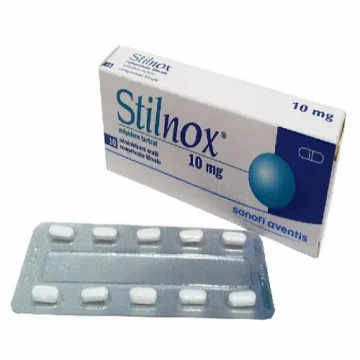- You have no items in your shopping cart
- Continue Shopping

For individuals managing ADHD or narcolepsy, transitioning from 50mg Vyvanse to Dexedrine may be a consideration when exploring personalized treatment options. Both medications, part of the amphetamine family, are prescribed to improve focus, reduce hyperactivity, and increase attentiveness. However, they function in slightly different ways, offering unique benefits depending on an individual’s needs, lifestyle, and how their body metabolizes the medication.
Shop Now: buy duromine
Understanding Vyvanse (Lisdexamfetamine) 50mg
Vyvanse (lisdexamfetamine dimesylate) is a long-acting prodrug designed to be gradually converted into its active form, dextroamphetamine, as it passes through the digestive system. This delayed activation helps ensure a smooth, sustained release throughout the day, making it an excellent choice for people who require consistent symptom control without the peaks and valleys associated with shorter-acting stimulants.
When prescribed at a 50mg dose, Vyvanse offers moderate to high therapeutic effects, ideal for adults and adolescents who need consistent cognitive enhancement or assistance in managing symptoms like impulsivity, disorganization, and fidgeting. Because it lasts up to 12-14 hours, many find that Vyvanse’s extended-release formula helps them stay focused from morning until evening.
However, some individuals may find that Vyvanse doesn’t provide the precise control they need or that the gradual onset doesn’t align with their preferred daily schedule. In such cases, switching to Dexedrine could offer a more tailored approach.
Transitioning to Dexedrine (Dextroamphetamine)
Dexedrine, which contains dextroamphetamine sulfate, offers both immediate-release (IR) and extended-release (ER) options. It is a direct stimulant, providing more rapid symptom relief than Vyvanse, which may be beneficial for individuals who need quicker effects or want greater flexibility in managing their dosage throughout the day.
A 50mg Vyvanse dose is roughly equivalent to 15-20mg of Dexedrine, depending on the individual’s metabolism and the formulation of Dexedrine (IR or ER). The decision to switch from Vyvanse to Dexedrine often comes from a need for more immediate symptom control or for a stimulant that can be dosed multiple times a day, giving the user more flexibility to address ADHD or narcolepsy symptoms when needed.
Dexedrine’s immediate-release formulation can provide faster symptom relief within 30 to 60 minutes of ingestion, while its effects typically last for 4 to 6 hours, making it easier to manage symptoms during specific times of the day. This shorter duration of action also allows for fine-tuning throughout the day, avoiding overmedication in the evening when users may prefer to wind down without the stimulant’s effects.
For those who opt for the extended-release version of Dexedrine (Dexedrine Spansule), effects can last up to 8 to 10 hours. While it doesn’t last quite as long as Vyvanse, the extended-release option offers a middle ground between the rapid onset of immediate-release stimulants and the all-day coverage of Vyvanse.
Key Considerations in Transitioning from 50mg Vyvanse to Dexedrine
- Individual Metabolism: Vyvanse metabolizes differently compared to Dexedrine. Since Vyvanse is a prodrug, its onset is more gradual, while Dexedrine’s effects are faster-acting. This can significantly impact how you experience symptom relief.
- Dosing Flexibility: Vyvanse is a once-daily medication, while Dexedrine allows for multiple dosing options throughout the day. Immediate-release Dexedrine can be taken several times to provide consistent symptom control, while extended-release Spansules may require only one or two doses.
- Duration of Effectiveness: Vyvanse is known for its long-lasting effects, sometimes stretching into the evening, which may or may not be desirable depending on the individual’s schedule. Dexedrine offers more flexibility in duration, which can be adjusted to personal preference.
- Potential Side Effects: Both medications share common side effects like appetite suppression, difficulty sleeping, and increased heart rate. However, because of their different release mechanisms, you may notice variations in how side effects manifest when transitioning between these two medications.
- Doctor Supervision: Switching from Vyvanse to Dexedrine should always be done under a healthcare provider’s supervision. They will help you determine the correct dosage, monitor how your body reacts to the change, and ensure you experience the full therapeutic benefit of the medication.
Why Consider the Transition?
Some people may transition from 50mg Vyvanse to Dexedrine to seek more personalized control over their medication schedule, to mitigate specific side effects, or to explore a shorter-acting option for more flexibility in symptom management. Others may find that Dexedrine’s immediate effect is better suited for tasks that require intense focus in shorter bursts or for situations where an immediate response is necessary, such as work presentations or academic exams.
Ultimately, the decision to move from 50mg Vyvanse to Dexedrine should be based on an individual’s unique needs, lifestyle, and the way they metabolize stimulants. Both medications have a proven track record in managing ADHD and narcolepsy symptoms, but the differences in release time, flexibility, and symptom control can make one more suitable than the other.
Conclusion
If you’re considering a switch from 50mg Vyvanse to Dexedrine, understanding how these medications differ in terms of release time, dosage flexibility, and symptom management is crucial. Always work closely with your healthcare provider to ensure a safe and effective transition. With careful monitoring, transitioning to Dexedrine could provide the customized symptom relief you need to enhance focus, productivity, and daily well-being.




